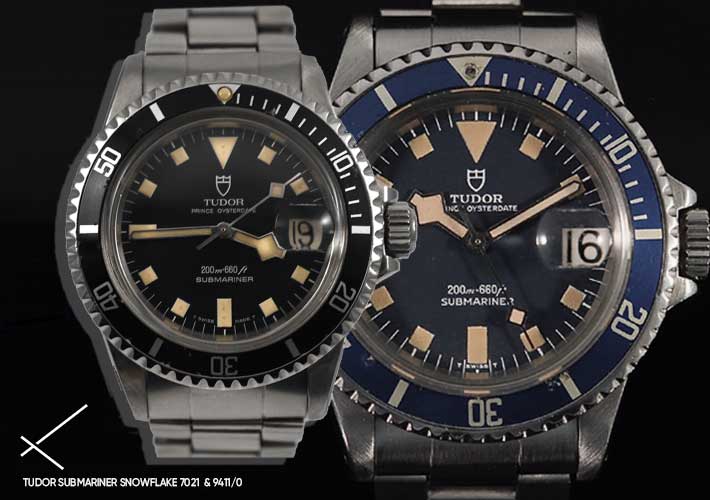
The Rolex submariner has been a great success with watch enthusiasts for many years. A tremendous enthusiasm that has placed it for thirty years at the forefront of the watches among the most desired in the world. A supremacy which, a little-known detail, is largely due to numerous full-scale experiments evaluated on the marketing of its alter-ego produced by Tudor (under the designation Tudor Submariner)
The production of Tudor, under the impetus of Hans Wilsdorf, was officially intended to produce, at a more affordable cost, watches incorporating the characteristics and performance of Rolex models, in order to allow those who could not afford the brand to nevertheless benefit from a quality timepiece. Technically the watches were differentiated by a movement generally a little less high-end because of the previous Rolex generation or from a less prestigious movement manufacturer than Rolex (such as ETA movements)
Second difference, the Tudors were equipped with a dial stamped with the arms of Tudor instead of the Rolex mark, a difference applied over time to the logo on the winding crown and on the folding clasp of the watch…
IMAGE
A progressive differentiation between the Rolex and Tudor brands associated with their respective models which reveals that in fact Rolex, champion of applied Taylorism and at the forefront of mechanized watchmaking production methods, very early on applied rigorous quality control to its productions and, as an industrial logic, had the genius to recycle many of its product models judged to be of significantly lower quality at the end of the chain, in a different brand marketing so as not to undermine the Rolex brand. A first in the watchmaking world of the first half of the twentieth century and inspired by the American Elgin pocket watch manufacturing units which marketed reconditioned models as new standard under the National Watch Company brand (its original name) at the beginning of the century.
For Rolex, the models will be reconditioned in the same factory under the Tudor name and just before the thirties, the production of Tudor models will be distributed in parallel from the mark to the crown with a similarity in the models which will extend to the pace of the ramp-up of Rolex production.
In the 1950s, on the strength of its success with its Rolex Oyster model, produced in large quantities, it was only natural that the waterproof case joined the Tudor range (in 1952). And it is during this period that the history of the Rolex/Tudor Submariner begins, strictly speaking.
Rolex requested by various navies, who at the time wanted to equip their first swimmers/combat divers with a high-performance diver's watch. Already knows the subject indirectly via the supply of movements to Panerai which equipped the Italian divers of the decima mas during the Second World War with a Rolex movement watch), But surprisingly, Rolex will not take the risk of benefiting from its technological developments directly on its brand (like snowflake needles more visible under water) and will entrust Tudor with the mission of initially producing a series of submariners for the French Navy modified according to the specifications of the armies….
It was in 1952, one year after the Rolex brand, that Tudor produced the submariner (under the reference 7922) a 100-meter waterproof watch equipped with a fleurier caliber 390 movement, at that time, externally only the dial and the box bottom distinguishes the Tudor from the Rolex, bracelet and crowns bearing the Rolex logo. In 1955 edition of the reference 7923, the only hand-wound Tudor submariner watch model equipped with the caliber ETA 1182. From 1958 it was the Tudor Submariner 7924 called big crown, which benefited from a larger winder, and makes it easier to use. Induced benefit that will benefit the Rolex Submariner since the water resistance of the Oyster cases used on these watches goes from 10 to 20 ATM thanks to this new type of winding crown.


